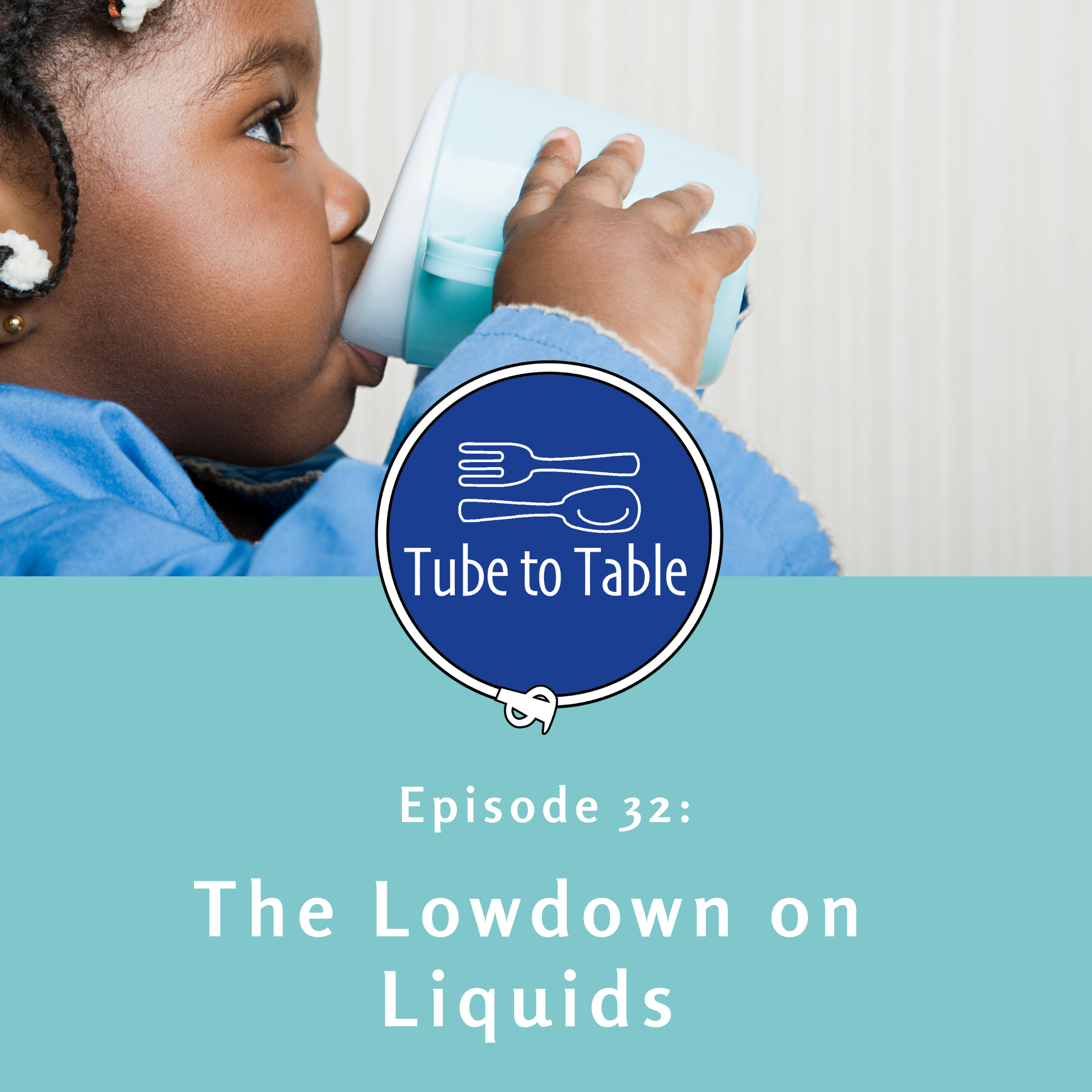Tube to Table Podcast: Episode 32: The Lowdown on Liquids
March 5, 2020
Posted in: Feeding, Feeding Tube Weaning, Tube To Table Podcast
On this week’s episode, Jennifer and Heidi are talking about liquids and how they play a role while weaning your child from a feeding tube. As we all know, liquids are an essential part of our life, especially when we are sick or not feeling our best. Think about when you are dehydrated and how that makes your body feel: Typically tired, low energy, swollen, and just generally uncomfortable. Kids feel that way too, even small babies, but they are not able to communicate that as well. At Thrive, we work with your child’s medical team to determine hydration parameters prior to starting a wean. In this episode, Heidi and Jennifer will discuss what that conversation looks like and why it is so important. Your hosts will also talk through 3 main reasons why introducing liquids can feel so hard during a wean or why your child isn’t showing as much interest in drinking.
You can download this episode from Itunes, Stitcher, Spotify, Google Play, or listen to it below:
Why are parameters important?
Setting hydration parameters are essential during a wean because we know that children are in more danger if they are dehydrated. They may have a higher tolerance for less nutrition for a short-period, but are more sensitive to the lack of hydration. This can cause an immediate medical concern, which is why we find it so important to work with your team and establish those hydration parameters prior to moving forward. In a previous episode, we discussed having effective conversations with your medical team, and discussing parameters is an important place to start. At Thrive, we prefer to focus on physiological parameters rather than a set number. This includes peeing, pooping, mood, energy, and sleep patterns. All of these help us look at the whole child and focus on the state of the child, rather than a chart of a specific number goal. Some physicians will also recommend to look at tears, saliva, and skin turgor (elasticity), so we encourage you to have that child-specific conversation with your team.
We have found that hydration impacts a child’s overall well-being, their energy level, and their ability to rise to the occasion and do hard things (such as wean!) We have noticed that when children are kept more hydrated throughout the wean, children tend to show more interest and when they are feeling better internally, are able to do more challenging activities. It is also helpful for parents and caregivers to feel more comfortable and pressure less when they feel confident that their child is hydrated.
Why are liquids so hard for kids to get the hang of?
Liquids are often so hard for kids to get over the hump where they are accepting liquids orally in quantities that are large enough. We almost always see children gravitate towards eating and solid foods first.
- Reflux/Vomiting: If a child has had a negative experience with reflux or vomiting either before, during, or while planning a wean, they start to build a negative association with the liquid. Children are able to taste that liquid from reflux or vomiting, and therefore immediately associate the taste with something scary. Children are less willing to take their foot off the brake pedal with liquids if they have had that history.
- Safety: Liquids are faster, harder to control in the mouth, and more impacted by gravity. This makes liquid one of the things that children are likely to aspirate on the most. If a child is at risk for aspiration or has had a history with aspirating liquids, it can be scary for them to continue to work on this. Children will work to avoid these liquids since they have been something that has been hard in the past. Once a child has been cleared and shown the ability to safely swallow liquids, you can start to introduce them. Liquids are tough for kids because they are faster and much harder to control in your mouth. This past difficulty may have also impacted their exposure around liquids through various developmental stages.
- Different Associations: In addition to the reflux/vomiting, there have likely been past feeding attempts that have built a negative association. For many children, parents have worked hard to either avoid a tube, gain weight, or get off the tube, and often employ non-responsive strategies that erode a child’s relationship with drinking. Instead of building their comfort and trust, they lose interest quickly and become fearful of the drinking. This can also happen within therapy if there is pressure for a child to “reach” a volume goal before the end of treatment.
There will be an upcoming episode on drinking and how that is introduced during weans, what to look for, how that develops during a wean, and some considerations to help your child learn to drink! Stay tuned!

Be the first to comment